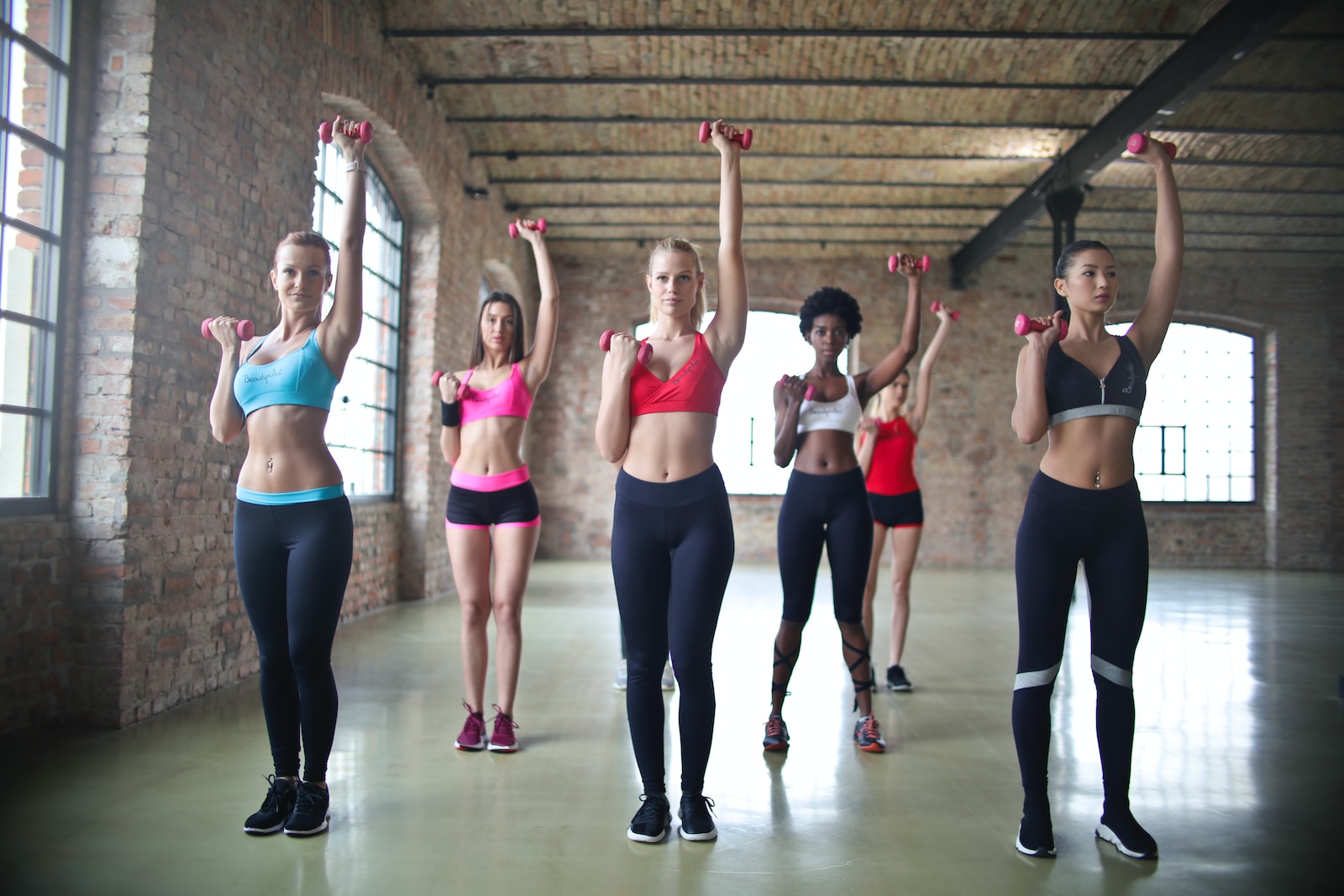Resistance band workouts have gained immense popularity in recent years, and for good reason. These versatile exercise tools provide a wide range of benefits that can help you achieve your fitness goals, all from the comfort of your own home. Whether you are a beginner or an experienced fitness enthusiast, incorporating resistance band workouts into your routine can take your training to the next level. In this article, we will explore the various benefits of resistance band workouts and how they can improve your overall fitness.
Convenience and Accessibility
One of the major advantages of resistance band workouts is their convenience and accessibility. Unlike traditional gym equipment, resistance bands are compact, lightweight, and portable. This means you can easily carry them with you wherever you go, making it convenient to exercise even when you are traveling or on the go. Additionally, resistance bands do not require a large amount of space, making them ideal for individuals who have limited room in their homes.
Resistance bands are not only convenient but also versatile. They can be used to target different muscle groups in your body, allowing you to create a well-rounded workout routine. With just a single resistance band, you can perform a multitude of exercises that engage your upper body, lower body, and core. This versatility ensures that you can effectively work all major muscle groups without the need for bulky equipment or expensive gym memberships.
Moreover, resistance bands are suitable for individuals of all fitness levels. They can be easily adjusted to different resistance levels, allowing you to customize the intensity of your workouts. Whether you are a beginner or an advanced athlete, resistance bands can be tailored to challenge your muscles and help you progress towards your fitness goals.
In summary, resistance band workouts offer convenience and accessibility that traditional gym equipment cannot match. They are compact, lightweight, and portable, making it easy to exercise anywhere, anytime. Additionally, resistance bands provide versatility in targeting different muscle groups and can be adjusted to accommodate individuals of all fitness levels.
Versatility and Variety
Resistance bands offer a wide range of exercises that target various muscle groups in your body. From upper body workouts to lower body exercises, you can perform a multitude of movements with just a single resistance band. This versatility allows you to create a well-rounded workout routine that engages all of your major muscle groups. Additionally, resistance bands can be adjusted to different resistance levels, making them suitable for individuals of all fitness levels.
When it comes to upper body workouts, resistance bands can effectively target muscles such as the biceps, triceps, and shoulders. Bicep curls, tricep extensions, and shoulder presses are just a few examples of exercises that can be performed with resistance bands to strengthen and tone these muscles. For the lower body, exercises like squats, lunges, and glute bridges can be enhanced by incorporating resistance bands, helping to build strength and definition in the legs and glutes.
The versatility of resistance bands also extends to core exercises. By incorporating resistance bands into movements such as planks, Russian twists, and side bends, you can engage your core muscles and work towards developing a strong and stable core. This not only improves your overall fitness but also enhances your posture and stability in everyday activities.
In summary, resistance bands offer a wide range of exercises that target different muscle groups in the body. Whether you want to work your upper body, lower body, or core, resistance bands provide the versatility and variety needed to engage all major muscle groups and create a well-rounded workout routine.
Full-Body Workout
Resistance band workouts provide a full-body workout experience. Whether you aim to strengthen your arms, tone your legs, or sculpt your core, there are specific exercises that can help you target each area. For instance, bicep curls, tricep extensions, and shoulder presses can effectively work your upper body muscles. Squats, lunges, and glute bridges can help strengthen your lower body. Furthermore, resistance band workouts engage your core muscles in every exercise, helping you develop a strong and stable core.
Working out with resistance bands engages multiple muscle groups simultaneously, resulting in a more efficient and effective workout. Unlike isolated exercises that target only one muscle at a time, resistance band workouts require you to engage various muscles to stabilize and control the band’s tension. This not only promotes muscle strength and endurance but also improves coordination and balance.
Additionally, resistance bands provide constant tension throughout the entire range of motion. This means that your muscles are engaged not only during the concentric phase of the exercise but also during the eccentric phase. The eccentric phase refers to the lengthening of the muscle as it returns to its starting position. By engaging the muscles throughout the entire range of motion, resistance band workouts promote muscle activation and help build strength and muscle definition.
In summary, resistance band workouts offer a full-body workout experience by targeting different muscle groups in the body. Whether you want to strengthen your arms, tone your legs, or sculpt your core, resistance band exercises can help you achieve your goals. The constant tension provided by resistance bands engages your muscles throughout the entire range of motion, promoting muscle activation and strength building.
Muscle Activation and Strength Building
Using resistance bands during your workouts can enhance muscle activation and strength building. Unlike traditional weights, resistance bands provide constant tension throughout the entire range of motion. This means that your muscles are engaged not only during the concentric phase of the exercise but also during the eccentric phase. This increased muscle activation can lead to greater strength gains and overall muscle development.
Resistance bands offer a unique form of resistance that challenges your muscles in a different way compared to traditional weights. The tension provided by the bands increases as you elongate them, creating a progressive resistance that matches your muscle’s strength curve. This type of resistance not only activates the targeted muscles but also engages the surrounding stabilizer muscles, resulting in a more comprehensive and effective workout.
Furthermore, resistance bands allow for eccentric contractions, which are known to promote muscle growth and strength development. During eccentric contractions, the muscle lengthens under tension, causing micro-tears in the muscle fibers. These micro-tears stimulate muscle protein synthesis and lead to muscle growth and increased strength over time.
In summary, resistance bands provide constant tension throughout the entire range of motion, leading to increased muscle activation and strength building. The unique form of progressive resistance offered by resistance bands challenges your muscles in a different way compared to traditional weights, resulting in greater muscle gains and overall strength development.
Joint-Friendly and Injury Prevention
Resistance bands are gentle on your joints, making them an excellent choice for individuals with joint issues or those recovering from injuries. The bands offer a lower impact alternative to weights or machines, reducing the risk of putting excessive stress on your joints. Furthermore, resistance bands help improve joint stability and flexibility, which can contribute to injury prevention and better overall joint health.
Unlike heavy weights, resistance bands provide a controlled amount of resistance that does not place excessive stress on your joints. This makes them particularly suitable for individuals with conditions such as arthritis or joint pain. By using resistance bands, you can effectively strengthen your muscles without aggravating your joints, allowing for a safer and more comfortable workout experience.
Moreover, resistance bands promote joint stability and flexibility. The resistance provided by the bands requires your muscles to work harder to stabilize your joints, helping to improve joint stability over time. Additionally, the constant tension provided by the bands encourages your muscles to stretch and lengthen, leading to improved flexibility. Increased joint stability and flexibility not only reduce the risk of injuries but also enhance your overall movement quality and range of motion.
In summary, resistance bands are joint-friendly and can help prevent injuries. The controlled amount of resistance provided by the bands reduces stress on the joints, making them suitable for individuals with joint issues or those recovering from injuries. Resistance bands also improve joint stability and flexibility, contributing to better overall joint health and reducing the risk of future injuries.
Improved Flexibility and Range of Motion
Incorporating resistance bands into your workouts can also help improve your flexibility and range of motion. The constant tension provided by the bands encourages your muscles to stretch and lengthen, leading to improved flexibility over time. This increased range of motion can be beneficial not only for your workouts but also for your daily activities, such as bending, reaching, and lifting.
Resistance bands offer a form of dynamic stretching, which involves moving through a range of motion while applying resistance. This type of stretching has been shown to be more effective in improving flexibility compared to static stretching alone. By incorporating resistance bands into your stretching routine, you can enhance your flexibility and achieve a greater range of motion in your joints.
Improved flexibility and range of motion have numerous benefits. They can enhance your athletic performance by allowing for greater joint mobility and improved movement mechanics. Additionally, increased flexibility can reduce the risk of muscle strains and joint injuries by enabling your muscles and joints to move more freely and efficiently.
In summary, resistance bands can improve flexibility and range of motion through dynamic stretching. The constant tension provided by the bands encourages your muscles to stretch and lengthen, leading to improved flexibility over time. This increased range of motion can have positive effects on your athletic performance and reduce the risk of injuries.
Cost-Effective Fitness Solution
Compared to other fitness equipment, resistance bands are a cost-effective solution for achieving your fitness goals. They are considerably more affordable than purchasing a full set of dumbbells or weight machines. Additionally, resistance bands are durable and long-lasting, ensuring that you get the most out of your investment.
Resistance bands provide a versatile and effective workout experience without the need for expensive gym memberships or bulky equipment. A single resistance band can be used for various exercises and target different muscle groups, making it a cost-effective alternative to purchasing multiple weights or machines. Whether you are on a budget or prefer working out at home, resistance bands offer a practical and affordable fitness solution.
Furthermore, resistance bands are made from durable materials that can withstand repeated use and stretching. They are designed to maintain their elasticity and resistance over time, ensuring that you can continue using them for an extended period. This durability makes resistance bands a long-lasting investment that provides value for money.
In summary, resistance bands are a cost-effective fitness solution compared to other equipment. They are affordable, versatile, and can be used for a wide range of exercises. Additionally, their durable construction ensures that they last for a long time, providing ongoing value for your investment.
Suitable for All Fitness Levels
Resistance band workouts are suitable for individuals of all fitness levels, from beginners to advanced athletes. The adjustable resistance levels allow you to tailor the intensity of your workouts according to your current fitness level. As you progress and become stronger, you can easily increase the resistance of the bands to continue challenging your muscles.
Resistance bands are designed to accommodate individuals of different fitness levels. They come in various resistance levels, ranging from light to heavy. Beginners can start with lighter bands and gradually increase the resistance as they become stronger and more proficient in their workouts. This progressive resistance ensures that you can continually challenge your muscles and make progress towards your fitness goals.
Moreover, resistance bands allow for a wide range of modifications and variations in exercises. This means that you can adjust the positioning, angle, or grip to increase or decrease the difficulty of an exercise. By making these modifications, you can customize the workout to suit your fitness level and target specific muscles more effectively.
In summary, resistance band workouts are suitable for individuals of all fitness levels. The adjustable resistance levels and exercise modifications allow you to tailor the intensity of your workouts according to your current fitness level. This ensures that you can continue challenging your muscles and making progress towards your fitness goals, regardless of your starting point.
Fun and Engaging Workouts
Resistance band workouts can be enjoyable and engaging due to the variety of exercises available. You can mix and match different movements to create a workout routine that keeps you motivated and excited to exercise. Additionally, resistance bands allow you to perform dynamic movements that mimic real-life activities, making your workouts more functional and practical.
The versatility of resistance bands allows for endless possibilities in creating workout routines. You can experiment with different exercises, combinations, and sequences to keep your workouts interesting and challenging. This variety not only prevents boredom but also ensures that you are continually challenging your muscles in new and different ways.
Furthermore, resistance bands enable you to perform dynamic movements that engage multiple muscle groups simultaneously. This mimics real-life activities and functional movements, making your workouts more practical and applicable to everyday life. By incorporating resistance bands into your workouts, you can improve your overall movement quality and enhance your performance in daily activities.
In summary, resistance band workouts offer a fun and engaging experience. The variety of exercises and the ability to perform dynamic movements keeps your workouts interesting and challenging. Additionally, resistance bands allow you to train functional movements, making your workouts more practical and applicable to everyday life.
Conclusion
Incorporating resistance band workouts into your fitness routine can provide numerous benefits. From convenience and versatility to improved muscle activation and flexibility, these workouts offer a well-rounded approach to toning and strengthening your body. Whether you are a beginner looking to kickstart your fitness journey or a seasoned athlete seeking to enhance your training, resistance band workouts are an excellent choice. Embrace the convenience and effectiveness of resistance bands and unlock a whole new level of fitness from the comfort of your own home.
FAQ
1. Are resistance band workouts suitable for all fitness levels?
- Yes, resistance band workouts are suitable for individuals of all fitness levels. The adjustable resistance levels and exercise modifications allow you to tailor the intensity of your workouts according to your current fitness level.
2. Can resistance band workouts help improve flexibility and range of motion?
- Yes, incorporating resistance bands into your workouts can help improve flexibility and range of motion. The constant tension provided by the bands encourages your muscles to stretch and lengthen, leading to improved flexibility over time.
3. Do resistance band workouts provide a full-body workout?
- Yes, resistance band workouts provide a full-body workout experience. Whether you aim to strengthen your arms, tone your legs, or sculpt your core, there are specific exercises that can help you target each area.
4. Are resistance bands a cost-effective fitness solution?
- Yes, resistance bands are a cost-effective fitness solution compared to other equipment. They are affordable, versatile, and can be used for a wide range of exercises. Additionally, their durable construction ensures that they last for a long time, providing ongoing value for your investment.


